Why you can trust Tom's Hardware
To read about our monitor tests in-depth, please check out Display Testing Explained: How We Test PC Monitors. We cover brightness and contrast testing on page two.
Uncalibrated – Maximum Backlight Level
We’ve rounded up a group of 27 and 32-inch monitors for comparison to the ViewSonic XG270QC. All support HDR and high refresh rates with Adaptive-Sync. Representing VA is the Gigabyte G32QC and Dell S3220DGF. IPS panels are used in the Aorus’ FI27Q and Asus ROG Strix XG279Q. The Pixio PX278 budget monitor employs a TN panel.
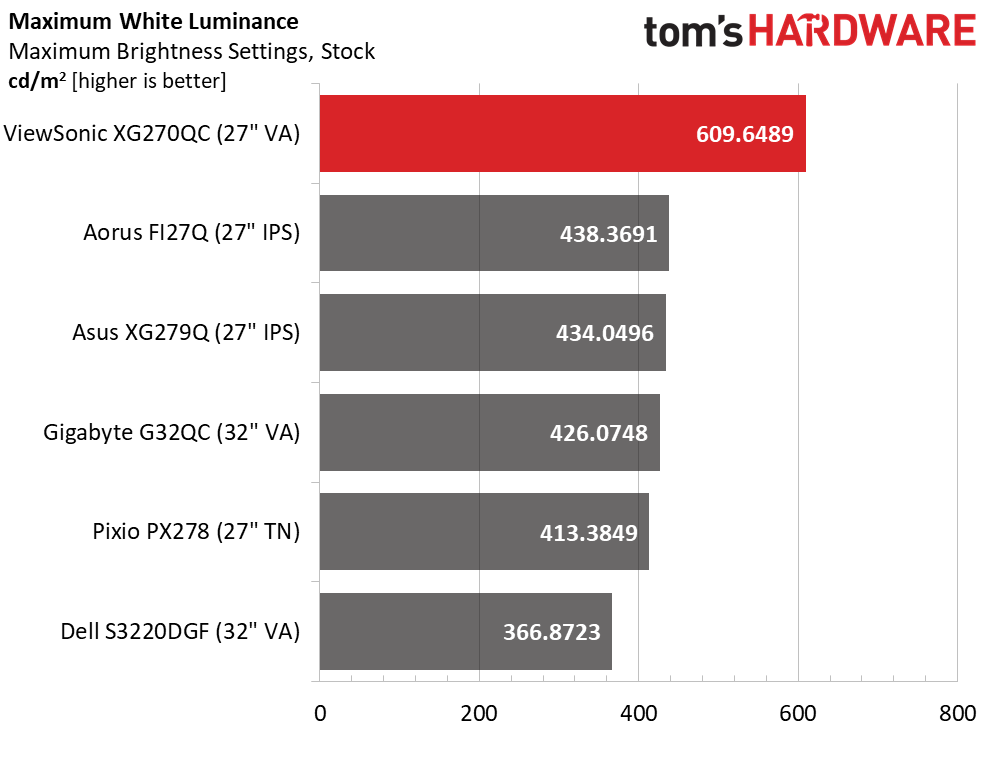
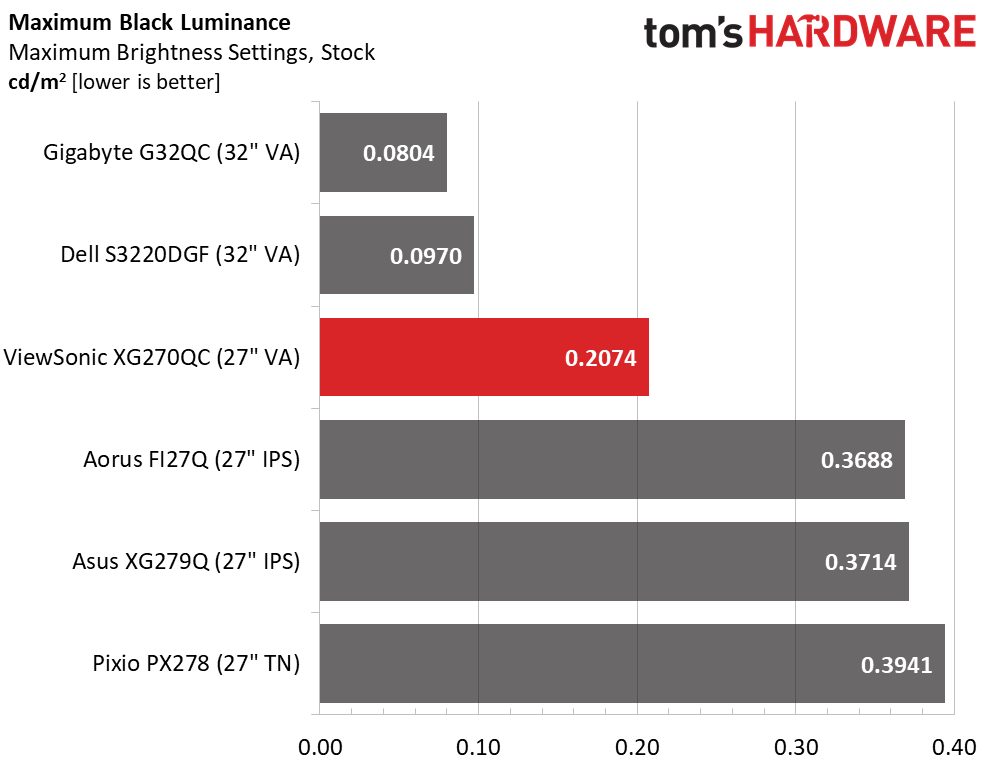
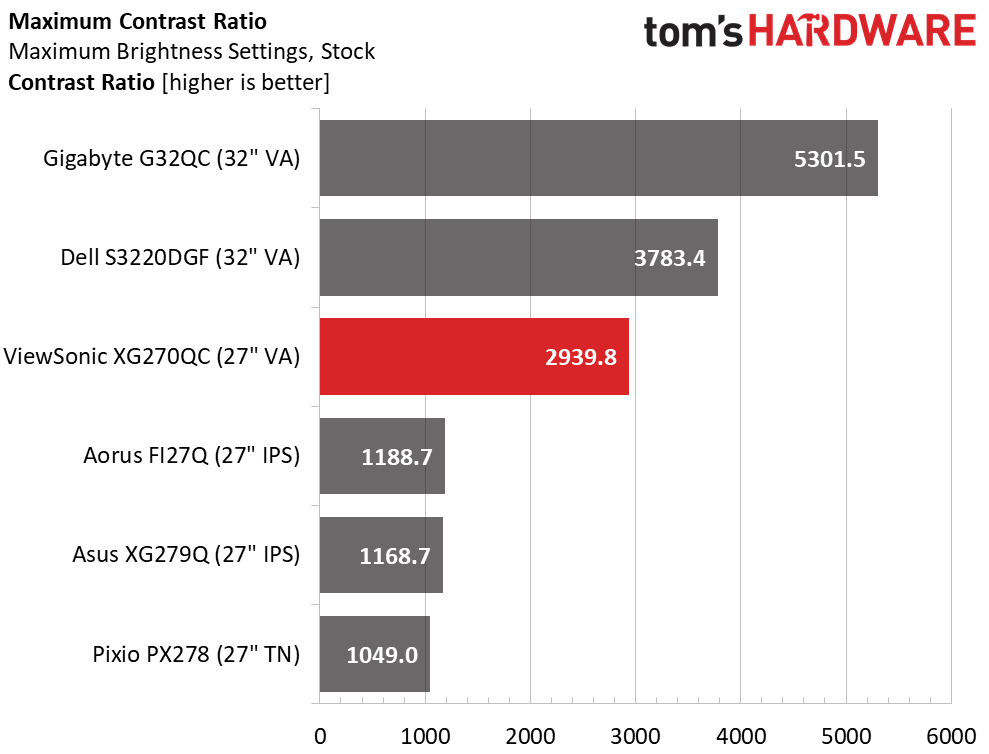
The ViewSonic XG270QC greatly out-distances its competition in the max output test. Though it’s certified for DisplayHDR 400, it exceeds 600 nits for both SDR and HDR signals. If you choose to use the dynamic contrast option in SDR mode, you can have nearly infinite contrast though there will be some clipping of highlight and shadow detail.
That bright backlight raises the black level higher than the other two VA panels but it’s still darker than the IPS or TN screens. Resulting native contrast is just under 3000:1 which is typical of nearly all the VA monitors we’ve tested. The Gigabyte and Dell screens are better than average when compared to our full database of reviewed screens.
After Calibration to 200 nits
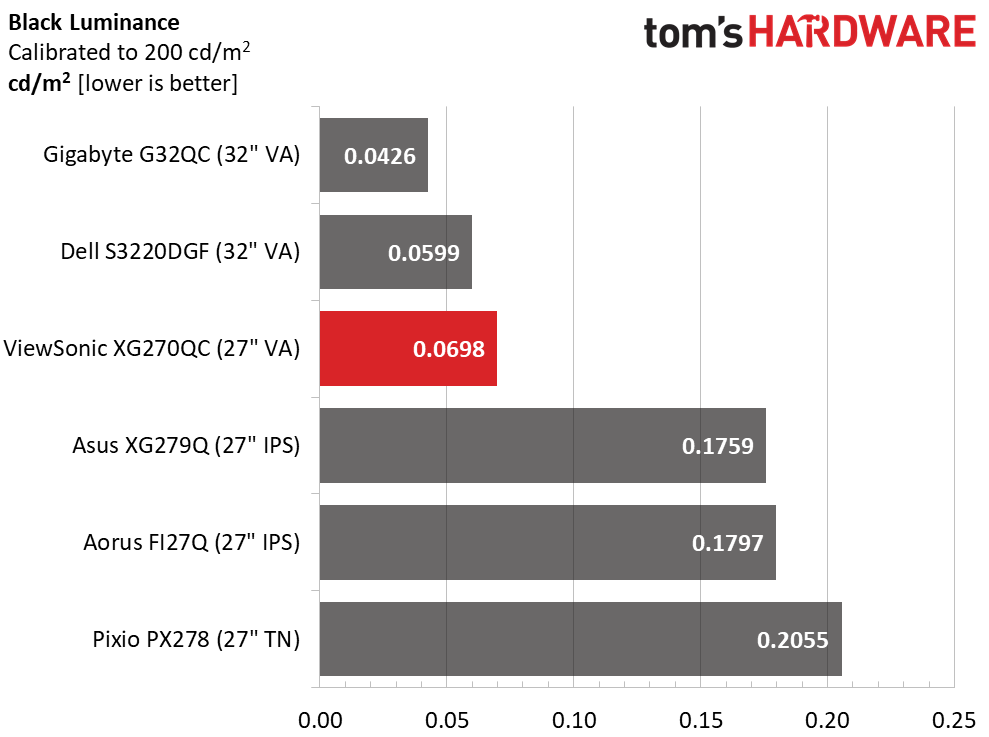
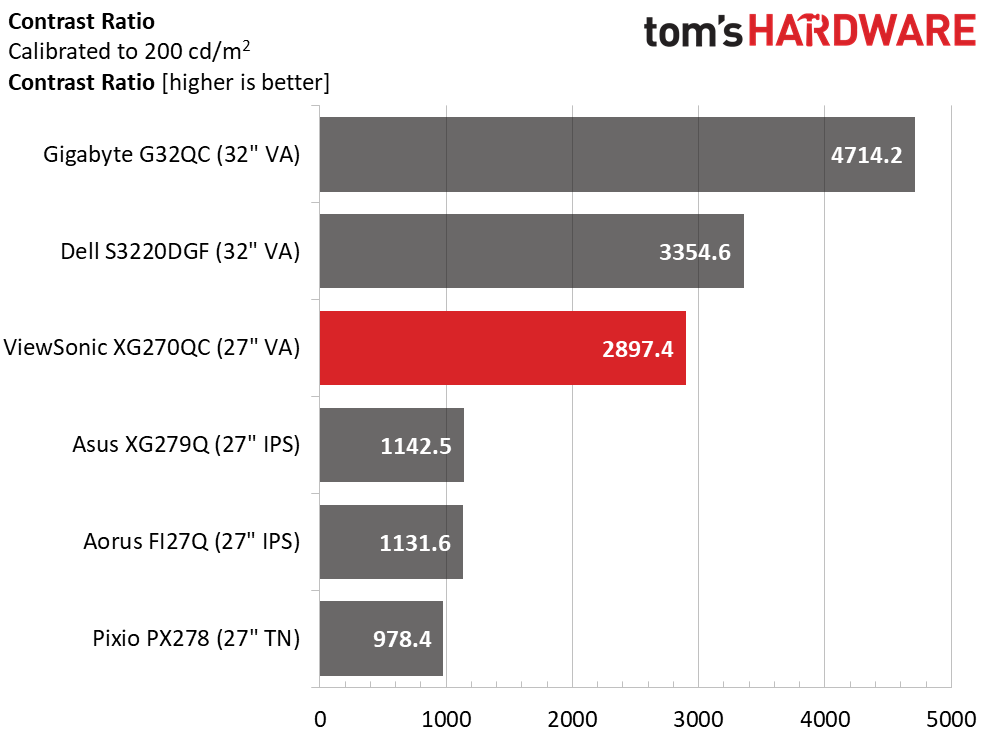
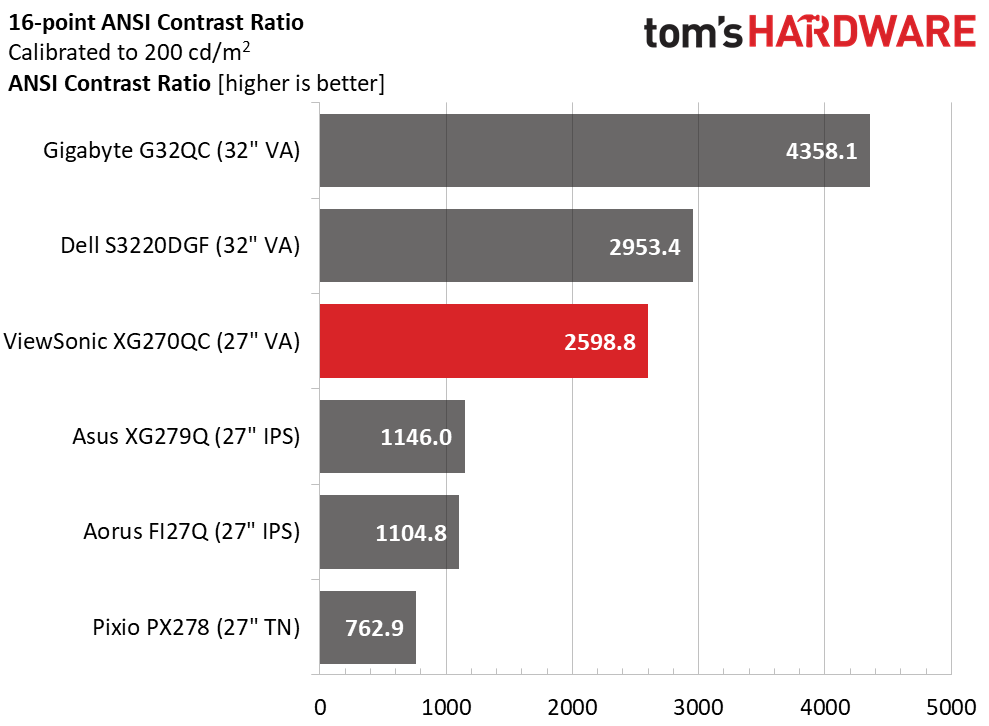
Calibration doesn’t cost the XG270QC any contrast with a still respectable 2897.4:1 score. Coupled with its large and accurate color gamut, the image is beautifully saturated and natural in all respects. Though there is no sRGB mode for SDR content, we like the extra vibrance.
Intra-image contrast is also quite good at almost 2600:1. ViewSonic’s Elite designation is well earned here with a premium panel built to a high standard. You can see that in terms of native contrast, the IPS and TN panels are well behind the curve.
MORE: Best Gaming Monitors
Get Tom's Hardware's best news and in-depth reviews, straight to your inbox.
MORE: How We Test Monitors
MORE: All Monitor Content
Current page: Brightness and Contrast
Prev Page Features and Specifications Next Page Grayscale, Gamma and Color
Christian Eberle is a Contributing Editor for Tom's Hardware US. He's a veteran reviewer of A/V equipment, specializing in monitors. Christian began his obsession with tech when he built his first PC in 1991, a 286 running DOS 3.0 at a blazing 12MHz. In 2006, he undertook training from the Imaging Science Foundation in video calibration and testing and thus started a passion for precise imaging that persists to this day. He is also a professional musician with a degree from the New England Conservatory as a classical bassoonist which he used to good effect as a performer with the West Point Army Band from 1987 to 2013. He enjoys watching movies and listening to high-end audio in his custom-built home theater and can be seen riding trails near his home on a race-ready ICE VTX recumbent trike. Christian enjoys the endless summer in Florida where he lives with his wife and Chihuahua and plays with orchestras around the state.
-
Chm0012001 Thanks for the comprehensive review. I'm trying to decide whether to buy this monitor or the Dell s3220dgf. Which of these two monitors will offer the most impactful HDR experience? The Viewsonic has a higher peak brightness (600 nits) but uses an 8 bit panel, whereas the peak brightness of the Dell is lower (500 nits) but has a 10 bit panel.Reply -
CyrusPhillip Reply
Informative review! Thanks for sharing it with forum posters. It is an amazing curved gaming monitor. I would like to suggest this monitor with a 27-inch screen size, 165Hz refresh rate, and AMD freesync graphics facility. I am using the previous model of Viewsonic: https://viewsonic.com/me/products/lcd/XG270QG.php It is also marvelous. Please keep sharing such reviews.Admin said:With few flaws, the ViewSonic Elite XG270QC is one of the best gaming monitors we’ve seen in the sub-$500 category.
ViewSonic Elite XG270QC Review: Sub-$500 Excellence at 1440p : Read more